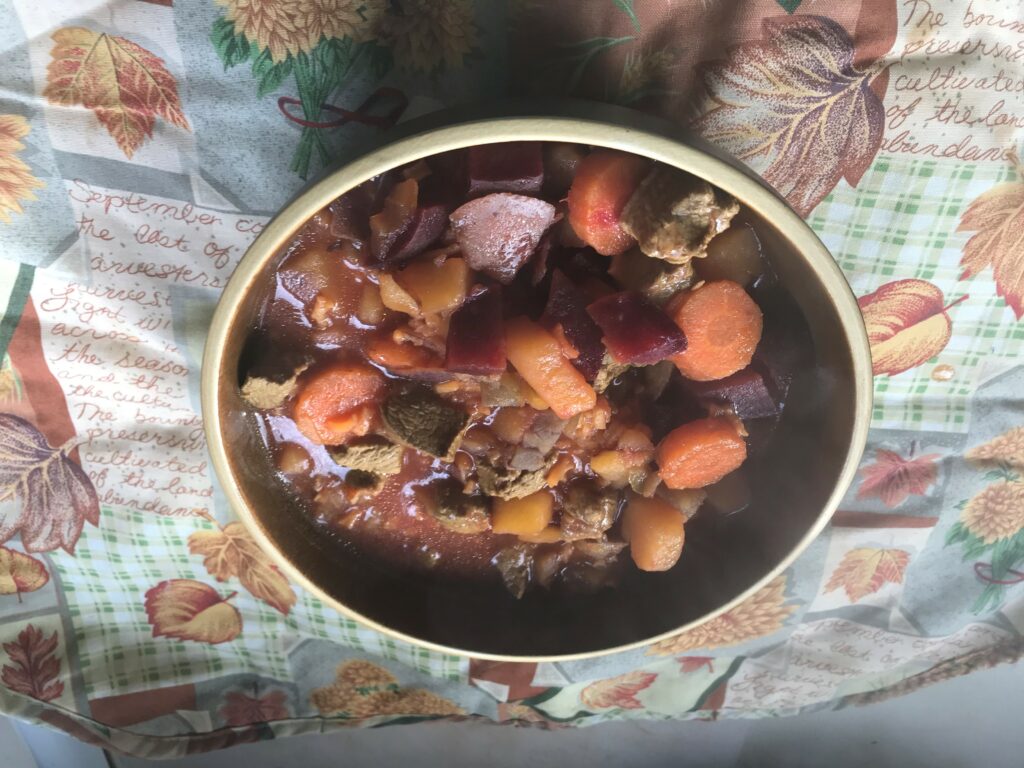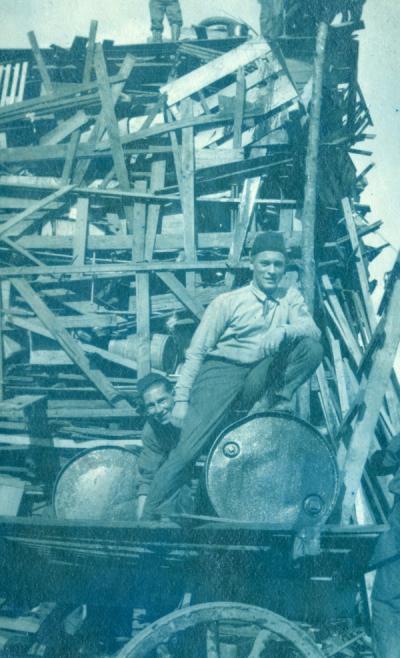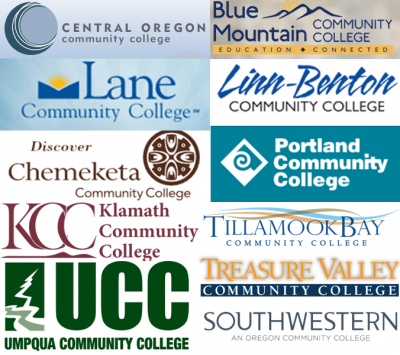Back in the school cafeteria of my Carter/Reagan-era childhood, soup was usually not on the list of offerings, unlike standards like wiener wraps, carrot “coins”, and those iconic cartons of milk. According to the 1936 Oregon State College Extension Bulletin, The School Lunch, soups and stews played a much bigger role in the past, however. Among the 15 soup recipes featured in this 32-page publication was one that deeply intrigued me: cream of peanut butter soup. So I set forth to give it a go!
Cream of Peanut Butter Soup

- ½ cup of peanut butter
- 2 ½ medium onions
- ½ pint of boiling water
- 1 quart of milk
- ¼ cup of flour
- 1 teaspoon of salt
- ½ teaspoon of celery salt
- Peel the onions and cut up into small pieces.
- Add peanut butter and boiling water to onions, stir until blended and boil 15 minutes.
- Heat the milk and add the thickening made from the flour and a little cold water.
- Mix the salts together and add to the milk.
- Combine peanut butter mixture with milk, scald and serve.
Featured in “The School Lunch,” November 1936. Oregon State College Extension Bulletin # 492 (Home Economics Series), which can be found online here.
First off, I was a little concerned over possible onion overload, so I adjusted the recipe to 1 chopped large onion. The ratio of milk to peanut butter also seemed a little skewed and the flavor that resulted was definitely not peanut dominant. It tasted like a subtle creamy soup with a hint of peanut and an oniony crunch. By itself, it tasted decent, but was sort of underwhelming. I thought of the soup’s potential as something else: “what else could I put in this?” and “can I use this as a sauce?” The concoction did taste better after a few hours of sitting around. I’m glad I satisfied my curiosity about this strange recipe and plan to re-purpose the leftover soup for a more exciting dish this weekend!






